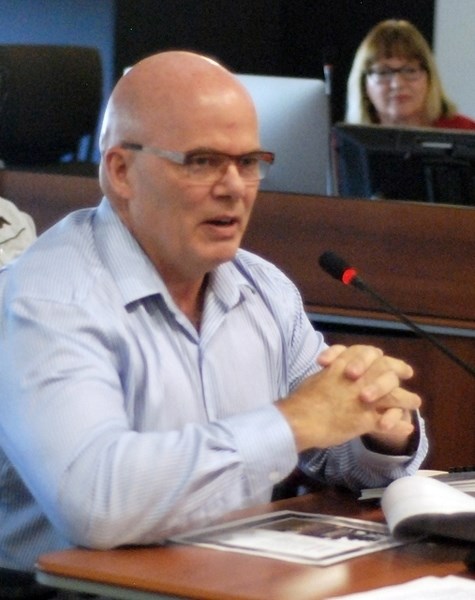Because of groundwater infiltrating the Town of Sundre's wastewater system, the per capita rate of wastewater generated by residents is almost double that of a community of comparable size.
Because of groundwater infiltrating the Town of Sundre's wastewater system, the per capita rate of wastewater generated by residents is almost double that of a community of comparable size.
"In Sundre, the amount of wastewater generated by the population is around a little over 500 litres per person per day," said Steven Dawe, a project engineer with BSEI.
"Comparable communities in southern Alberta range between 250 and 300 litres per person per day. In Sundre, we're almost double what you'd expect the sewage generation to be," he told council during its May 16 meeting.
He was quick to add he did not think this was because residents "in Sundre are using the facilities any more than anyone else. This has to do with infiltration."
Dawe was among several other engineers who came to present council with an update on the wastewater treatment study as well as the water quality based effluent limits study.
"If we go forward with trying to expand the wastewater treatment operation to account for all this infiltration, it's going to cost us more because now we're treating water that's just entering into our collection system underground," he said.
"It's important to really understand that solving infiltration is not just a short term gain, it's going to be a gain in the long term as well because now our future treatment system will be smaller."
Mayor Terry Leslie inquired whether the community should consider taking steps to conserve water in addition to addressing the issue of infiltration to reduce the overall amount of water used and thus the amount of water that must be treated.
That could be a discussion worth having with administrative staff to try and determine how much water residents are using, said Dawe.
"Do we have to concentrate more on our infiltration than our lagoon system?" asked Coun. Paul Isaac.
"That is a good direction to explore," replied Dawe.
However, at the end of such a review, council might discover that it's worth spending — hypothetically speaking — an additional $1 million on the wastewater treatment plant as opposed to spending perhaps $5 million digging up roads to tackle infiltration, he said.
"It's hard to say — is it (infiltration) in one location, is it spread throughout town?"
Coun. Isaac wanted more information on the town's current wastewater capacity.
The municipality consumes roughly 1,000 cubic metres of water in January, but that amount climbs during the spring thaw as groundwater starts to rise, said Kyle Easton, an associate/project engineer with BSEI.
"So you start getting groundwater coming up and you start receiving infiltration into your system and this reduces your capacity," he said.
"The worst month is typically the monsoon season for Alberta — June time frame — that's when you climb to or exceed your current capacity."
As far as a short-term solution, town staff have been checking various areas within the town for infiltration, he said.
"As the groundwater starts to rise, we'll start being able to see more and more infiltration and identify key locations that we can look to start a rehabilitation program, where we can go in and it may be lining the pipes, it may be having to replace a street section to take care of the infiltration issues."
While such measures would increase the town's overall capacity, the costs of such projects would be dependant upon the area as well as the scope of the work required to upgrade the underground services, he said.
Although fixing the issue of infiltration will buy the town time, "ultimately if you want the town to grow more, you're still going to have to do something with a larger capacity," Angie Lucas, acting CAO, told council.
The mayor was curious about a 2013 study that had presented a couple of options, including one that would cost about $11 million, and wanted to know to what capacity that would bring the town's system.
"That population is approximately 7,500 persons based on the infiltration that we're seeing at this time," said Easton.
"Again, infiltration is the key. If we can get that down we can increase our population."
The mayor also wondered whether the $11 million quoted in 2013 study would have changed in light of the prolonged economic downturn.
"Would you expect those prices to be lower because of the change in economic climate," he asked.
"At this point in time I'd have to say they'd be about the same," answered Easton.
"They may be lower but there's materials that pricing has gone up -- it didn't go down. Construction-wise, your labour and material cost is more competitive at this time but the actual product itself is in some cases higher than it was before."
The mayor then inquired about the timeline to complete the process of addressing capacity as well as wastewater quality issues.
Once the two reports are finalized and approved by Alberta Environment, the next step will be to obtain funding for the project, said Easton.
"A detailed design would take approximately six months to do, and then construction would start the following season."
Council carried a motion to accept the studies as presented for information.
Click here for related story.
